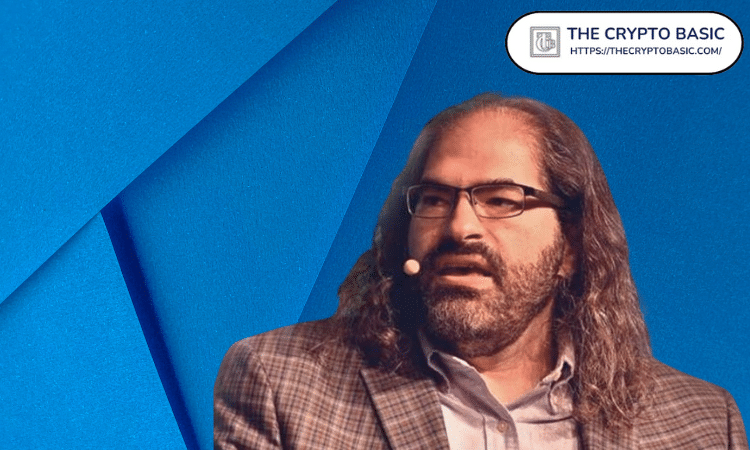RoarChain: Bridging self‑custody, AI, and sustainable yield for web3’s next billion
The post RoarChain: Bridging self‑custody, AI, and sustainable yield for web3’s next billion appeared on BitcoinEthereumNews.com. In the latest SlateCast episode, CryptoSlate’s Editor‑in‑Chief Liam “Akiba” Wright and CEO Nate Whitehill sat down with Dustin Hedrick, co‑founder of The Roar, to unpack how RoarChain, a self‑custody‑first layer‑two built on the OP‑Stack, blends artificial‑intelligence tooling, fee‑backed yield, and a decade‑long roadmap to welcome the next wave of crypto users. Building a Self‑Custody L2 on OP‑Stack RoarChain’s architecture begins with an unflinching stance on wallet sovereignty. “Decentralization is core and we cannot move away from that… you don’t own your wallet or your keys unless you have those keys privately,” Hedrick stressed when asked how the chain protects newcomers who struggle with basic password hygiene. By rolling its own OP‑Stack network, Hedrick says the team can keep fees low while inheriting Ethereum security and Optimism’s Superchain interoperability, without “feeding users to death” on transaction costs. Smarter Wallets & AI Trading Agents A standout feature is Roar’s forthcoming “smarter wallet,” where AI parses on‑chain data the moment a user connects. “You’ll have the NFTs literally interact with the AI as you log in… it’s learning your traits in those first few seconds,” Hedrick explained, outlining how the model combines wallet history with a 25‑point, five‑star project‑rating system that scans over 11,000 tokens. Full trade execution (“agency”) is still gated, but Hedrick hopes to activate it later this year once the guardrails are battle‑tested. Yield Backed by Fees, Nodes & NFTs, Not Ponzinomics Skeptics of high‑yield promises often recall the 2021 cycle’s excesses. Hedrick counters that RoarChain’s rewards are underwritten by real cash‑flows: “We have some of the same staking fees as Uniswap and… our chain is offering nodes that actually do something in function”. Revenue from node sales, DEX trading fees, and secondary NFT markets cycles into a DAO‑controlled treasury, which has been “largely personally funded” to date. The goal is a rapid network…

The post RoarChain: Bridging self‑custody, AI, and sustainable yield for web3’s next billion appeared on BitcoinEthereumNews.com.
In the latest SlateCast episode, CryptoSlate’s Editor‑in‑Chief Liam “Akiba” Wright and CEO Nate Whitehill sat down with Dustin Hedrick, co‑founder of The Roar, to unpack how RoarChain, a self‑custody‑first layer‑two built on the OP‑Stack, blends artificial‑intelligence tooling, fee‑backed yield, and a decade‑long roadmap to welcome the next wave of crypto users. Building a Self‑Custody L2 on OP‑Stack RoarChain’s architecture begins with an unflinching stance on wallet sovereignty. “Decentralization is core and we cannot move away from that… you don’t own your wallet or your keys unless you have those keys privately,” Hedrick stressed when asked how the chain protects newcomers who struggle with basic password hygiene. By rolling its own OP‑Stack network, Hedrick says the team can keep fees low while inheriting Ethereum security and Optimism’s Superchain interoperability, without “feeding users to death” on transaction costs. Smarter Wallets & AI Trading Agents A standout feature is Roar’s forthcoming “smarter wallet,” where AI parses on‑chain data the moment a user connects. “You’ll have the NFTs literally interact with the AI as you log in… it’s learning your traits in those first few seconds,” Hedrick explained, outlining how the model combines wallet history with a 25‑point, five‑star project‑rating system that scans over 11,000 tokens. Full trade execution (“agency”) is still gated, but Hedrick hopes to activate it later this year once the guardrails are battle‑tested. Yield Backed by Fees, Nodes & NFTs, Not Ponzinomics Skeptics of high‑yield promises often recall the 2021 cycle’s excesses. Hedrick counters that RoarChain’s rewards are underwritten by real cash‑flows: “We have some of the same staking fees as Uniswap and… our chain is offering nodes that actually do something in function”. Revenue from node sales, DEX trading fees, and secondary NFT markets cycles into a DAO‑controlled treasury, which has been “largely personally funded” to date. The goal is a rapid network…
What's Your Reaction?




































